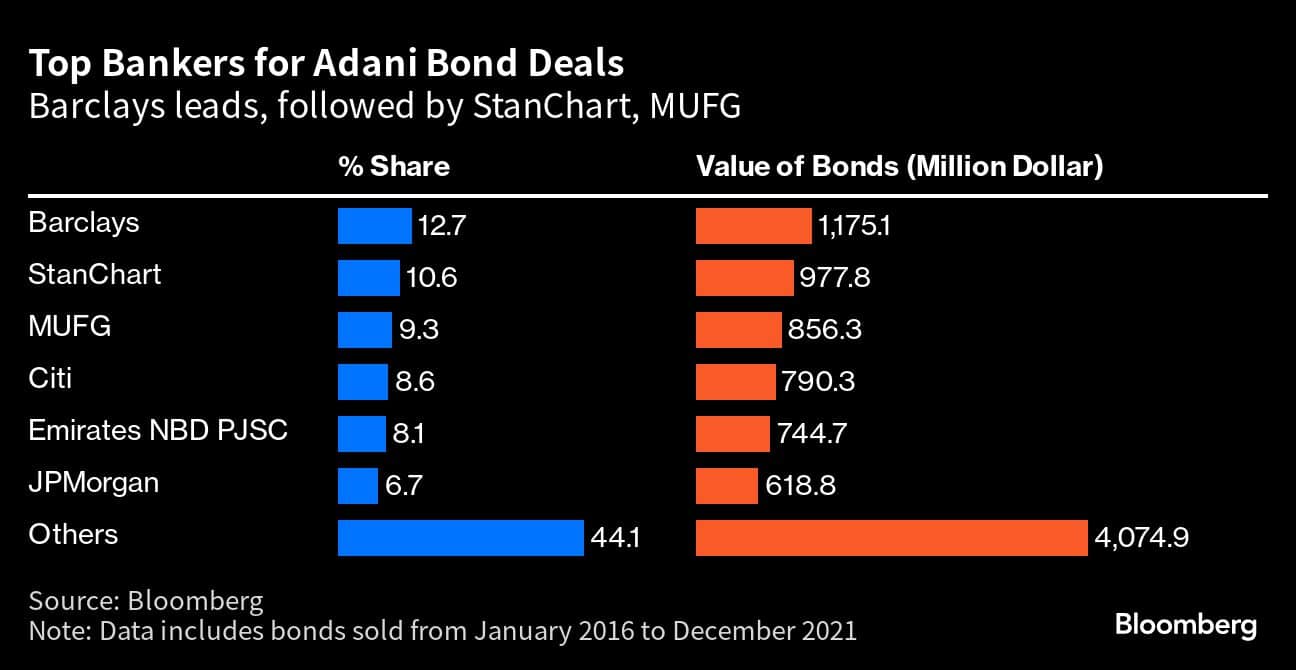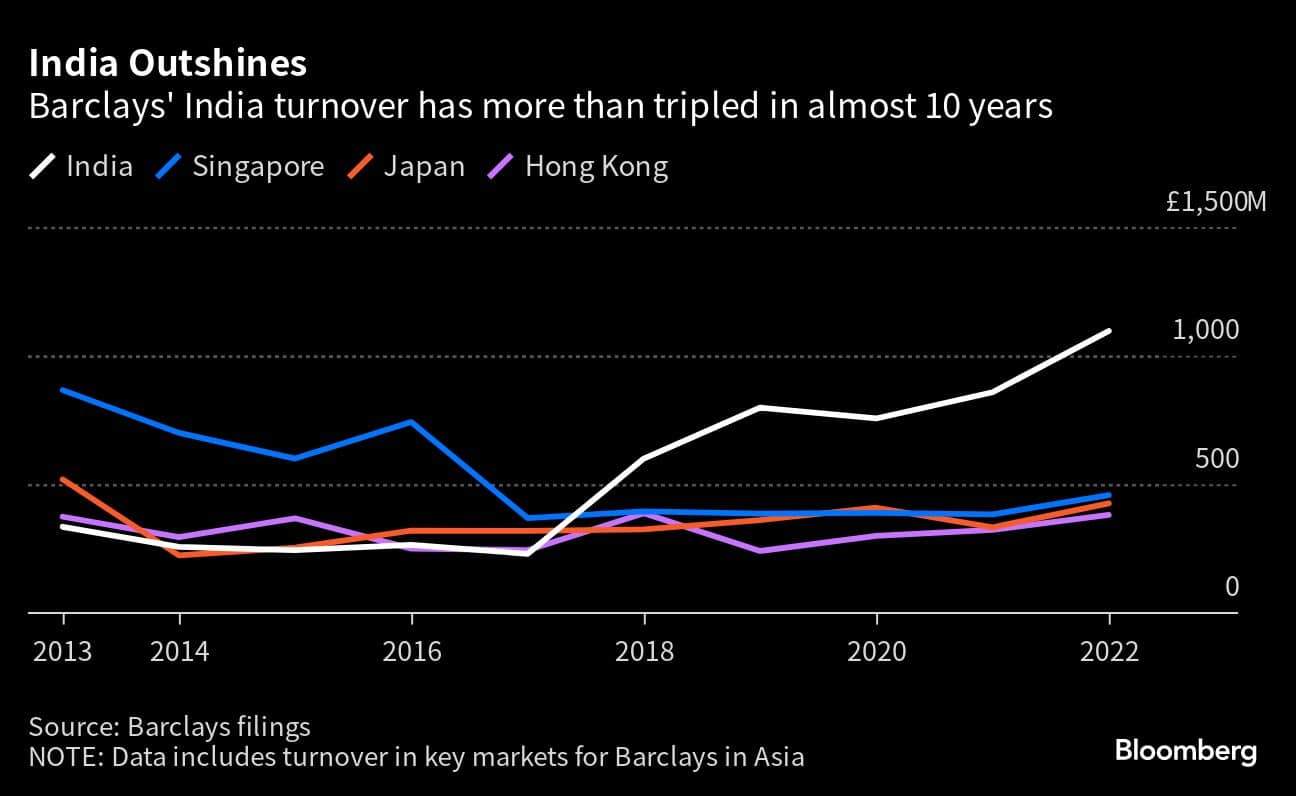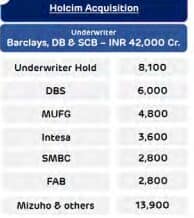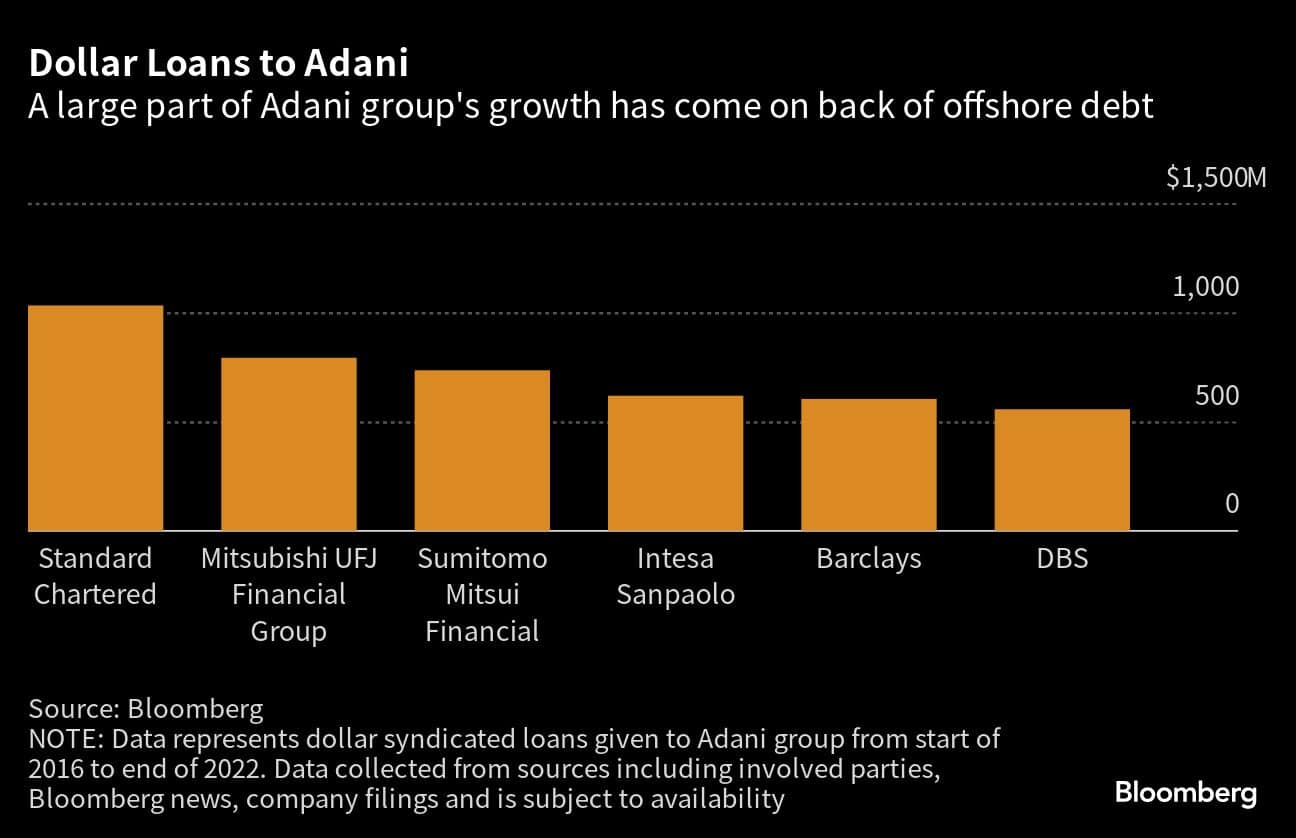Barclays Ties
Barclays’ ties to the group stand out among the many foreign firms that have stepped forward in recent years to assist fund Adani as the billionaire’s empire expanded. These firms include Standard Chartered, Mitsubishi UFJ Financial Group Inc., and Deutsche Bank AG. The UK company was one of the first international bankers to develop connections with Adani in India, and it is the only major bank with its Asia-Pacific headquarter located in the region.
Until the current break, the connection was fruitful. From 2016 to 2021, Barclays arranged the most total bonds for the group, and it has also been one of the most important loan providers, behind Standard Chartered and MUFG. When it comes to mergers advisory, the company has been number one in India for the past 12 months.
Bond placement fees and loans to Adani and other Indian companies, such as Mukesh Ambani’s Reliance Industries Ltd., have helped the bank increase its Asian revenue to more than 5% of its total, up from just 2.5% five years ago, despite slower growth in business for some global rivals in the region.

In an interview with Bloomberg Television in April, C.S. Venkatakrishnan, CEO of Barclays, noted that Adani “seems to have taken quite a lot of steps to improve its own financial position, so that’s good.”
The bank, according to Venkatakrishnan, would maintain its investments in his home country of India.
He remarked, “We have long had a very strong investment-banking presence in India, it has contributed well to us.”
The importance of India to Barclays was highlighted in 2016 when CEO Jes Staley visited with Prime Minister Narendra Modi. Staley was quoted as saying during his trip that the company intended to expand its back office operations in the country in preparation for future expansion there.
Jaideep Khanna, a 22-year veteran of Barclays who was appointed CEO of Asia-Pacific in 2017, is largely responsible for the bank’s impressive growth in India. Khanna manages the division from an eighth-floor office in Mumbai’s Ceejay House, one of the best buildings in India’s financial hub, whereas most Asia bank chiefs are headquartered in Hong Kong or Singapore.
With Khanna at the helm, Barclays has been able to keep strong ties with Adani and the rest of India’s rising corporate titans. Khanna is Adani’s speed-dial banker for significant financial projects, the individuals said, adding that he has a team overseeing the group’s connection.
Also Read : IndusInd Bank’s first-quarter net profit may increase 34% due to robust loan growth.

According to Khanna’s remarks in a 2021 interview with Bloomberg, Barclays is “probably the only international bank of our size and stature that has the regional CEO based out of India – that gives a sense of how important India is.”
After receiving a $400 million capital infusion two years ago — the largest since it entered the nation in 1990 — Barclays’ local unit was able to take on more exposure in India via loans and credit secured by shares.
India is home to more than 24,000 Barclays employees, making it the company’s largest single location outside of the United Kingdom. That makes it a significant foreign bank employer in India. Last year, India was the fourth most profitable region for Barclays worldwide, after the United Kingdom, the United States, and Ireland. The corporate and private banking sectors in India are more than twice as large as their counterparts in Singapore and Japan.
Barclays, together with Deutsche Bank and Standard Chartered, was a principal banker in Adani’s recent $6.5 billion transaction to acquire Holcim’s cement holdings in India.
In an interview with the Economic Times of India from last year, Jugeshinder “Robbie” Singh, Adani’s CFO, indicated that Barclays was a “trusted sounding board” in regards to the Holcim takeover, giving both financing and merger assistance.

According to data provided by Bloomberg, in the 12 months leading up to April, Barclays’ acquisition propelled them to the top of the rankings for mergers advisory in India, surpassing JPMorgan Chase & Co.
With fewer deals from Adani, the bank must now find alternative ways to make money in India. Since the release of the Hindenburg report, the company has not issued any offshore bonds, and it has been increasing its reliance on loans as a result of the rising cost of capital.
According to a statement sent to Bloomberg by Adani, the bank’s exposure to Adani portfolio companies as of March 31 places it at the seventh spot. No definition of “exposure” was provided.
Barclays’ investment bank has been the primary conduit through which the bank has transacted with Adani, facilitating the sale of bonds and the issuance of loans that are not carried on the bank’s balance sheet and are often sold off. Japanese and Middle Eastern banks are among those with the most direct exposure to Adani’s debt, the people added.
Stocks and bonds issued by Adani have recovered some of their losses since the group acquired an investment from GQG Partners Inc. No evidence of stock-price manipulation, as claimed by the US short seller, was discovered in a preliminary report from an Indian court panel in May.

To further strengthen its financial sheet, the company has repurchased bonds, repaid loans, and is actively selling shares. According to the sources, it has repaid the banks $200 million of the $1 billion mezzanine loan it received to acquire the Holcim properties. The initial loan was funded by Barclays, Deutsche Bank, and Standard Chartered. After certain banks refused to refinance Adani’s request to purchase Holcim, the company repaid a $500 million bridge loan to the original banks in March.




